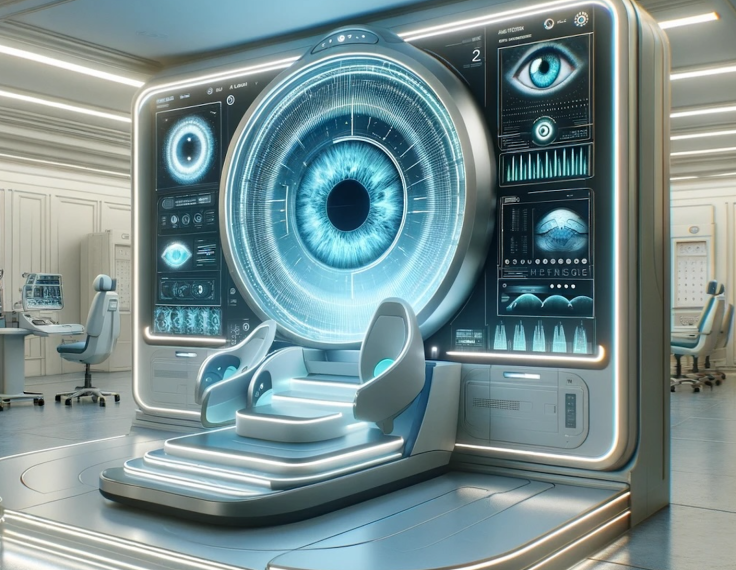Predicting the Next Breakthroughs in Eye Care Technology
Navigating the Complexities: Addressing Challenges and Innovations in Modern Eye Care

Two decades ago, the landscape of eye care bore little resemblance to the sophisticated array of tools and technologies we see today. As with any dynamic industry, the field of ophthalmology is continually evolving, driven by relentless innovation and breakthroughs. Similarly, shifts in strategies and practices are constantly unfolding, significantly enhancing and broadening the scope of professional eye care.
Current State and Challenges of Eye Care
Transforming eye care begins with a thorough understanding of its current landscape. Although these have marked a much-needed departure from age-old techniques, various challenges remain hindrances to comprehensive care.
Optical chains play a massive role as the initial point of eye care, especially in basic referrals and examinations. These chains' capabilities are limited to preliminary services and corrective lenses. While fast and efficient, it has caused a gap in eye care.
Clinics worldwide are also cluttered by bulky, condition-specific, and expensive devices. This is further limited by a fragmented IT infrastructure across systems that limits transferability of important patient data during transitions between clinics. Data loss greatly affects continuity of care.
The potential for telemedicine and remote care in ophthalmology is promising, yet it is restricted by the need for affordable, user-friendly, and sophisticated portable devices, which are currently unavailable.
Additionally, optometry clinics face competition from online platforms that sell glasses and contact lenses directly to patients, which decreases their revenue. Furthermore, the disparity between the number of ophthalmologists and optometrists leads to long wait times and inefficient referrals. This disruption necessitates acquiring new technologies to stay competitive and provide better care.
Predicting What's Next in Eye Care
Despite the current challenges, the future of eye care promises new advancements targeted to make better services more efficient and accessible to all.
User-friendly and portable devices are set to become the norm, enabling home-based care among patients. Moreover, seamless data accessibility is also on the horizon with cloud systems, regulatory changes, and IT advancements that ensure data continuity, regardless of care setting.
New developments will transform the eye as a window to overall health by enabling the detection of systemic diseases, like cancer, stroke, and dementia, through a simple eye image. Through insights derived from scans, preventative benefits affecting patient well-being can be achieved. Artificial intelligence (AI) will play a key role in data analysis and efficiency to support patients and professionals to ensure superior care.
One of the most alarming statistics in eye care is the rise in shortsightedness projection. This disease is set to affect over half of the global population by 2050. This can be solved with early monitoring and intervention.
Beyond Sight: Seeing the Big Picture
Eye care is increasingly becoming a crucial part of overall health monitoring. In the near future, it will be recognized as a cost-effective gateway for broader health management — a practical alternative to expensive options like MRI scans. Eye exams are non-invasive and easy to perform regularly, making them an ideal choice for frequent health checks.
Advanced eye care technologies will soon be integrated into clinical workflow and universally available, transforming the eye care space, enhancing overall well-being, and advancing economies. This democratization of technology will solve gaps in care, and empower individuals to take proactive steps in managing their overall health through their regular eye tests.
About the Author
Dr. Ashkan Eliasy is a leading healthcare figure known for his multidisciplinary expertise. With a background that spans biomedical engineering, data science, business, and corporate finance, he is behind meaningful innovations in the medical technology industry.
Some of his academic achievements include over 50 peer-reviewed journal publications, 900+ citations, collaboration with 60+ scientists globally, and four patents. Additionally, his work has led to the development of novel algorithms for eye pressure measurement and corneal stiffness assessment, which are currently adopted in clinical practices worldwide.
Dr. Eliasy entrepreneurial journey includes launching a fintech startup, to improve venture financing, and a medtech spinout that to commercialise a portable medical device. Beyond these ventures, he also consults for startups and investors in the medtech sector, helping to strategically deploy over $20 million in funding.
© Copyright IBTimes 2025. All rights reserved.





















